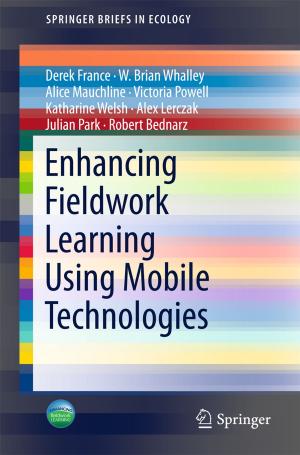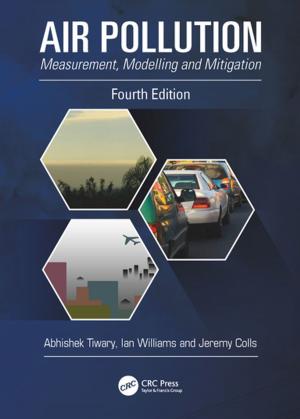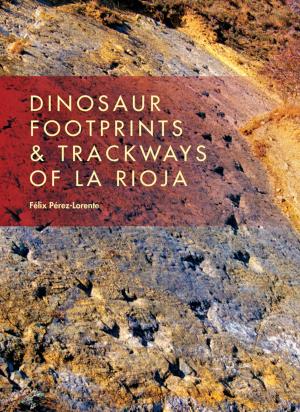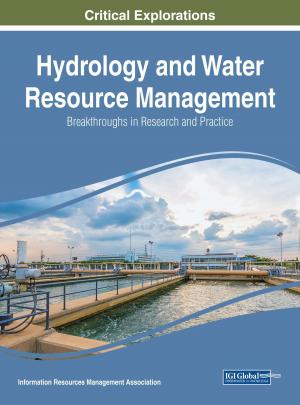A Fair Share
Doing the Math on Individual Consumption and Global Warming
Nonfiction, Science & Nature, Science, Biological Sciences, Environmental Science, Nature, Environment, Environmental Conservation & Protection, Earth Sciences| Author: | Steffen Erik Eikenberry | ISBN: | 9781732377714 |
| Publisher: | Steffen Eikenberry | Publication: | June 30, 2018 |
| Imprint: | Steffen Eikenberry | Language: | English |
| Author: | Steffen Erik Eikenberry |
| ISBN: | 9781732377714 |
| Publisher: | Steffen Eikenberry |
| Publication: | June 30, 2018 |
| Imprint: | Steffen Eikenberry |
| Language: | English |
Global warming looms large, and seems beyond the ken of any one person to affect, while the notion that simply driving less or changing other habits could be of any real use seems to make a mockery of the enormity of the problem. However, a rigorous quantification of consumption shows that, far from a triviality, it is ultimately individual-level consumption that drives nearly all US carbon emissions, with the greater share due to those three basic things everyone does every day: get around (personal transportation), directly use energy (heating, cooling, lighting, etc.), and eating, all things one has direct control over day by day. The focus of this text is to rigorously quantify how all these behaviors drive global warming, and how they can reasonably be altered at the individual scale in meaningful ways. Furthermore, while hopefully accessible to a general audience, the text is meant to be scientifically rigorous, and so the mathematics and methods are not hidden from the reader's eyes.
While making up just over 4% of the globe's population, the US is responsible for about 15% of global carbon emissions (and even more historically), with each American directly or indirectly responsible, on average, for over 20 metric tons of carbon dioxide annually; to meet near-term climate stabilization targets, this sum must be cut to no more than 10 to 15 metric tons, a task that is eminently achievable via simple changes in lifestyle and energy use. Indeed, there already exists profound variation across individuals in their carbon footprint with respect to all major categories of consumption, and so such changes are demonstrably achievable within American society as it currently exists. Not only would such changes take pressure off the climate system, but they would greatly aid the society-wide transition to a low-carbon infrastructure that must occur, either sooner or later.
Looking at particulars, the typical American's 20+ tonne carbon dioxide footprint can be reduced by 20-50% mainly by upgrading to a high-MPG vehicle, changing one's thermostat by a few degrees, avoiding other unnecessary energy uses, eliminating most beef and food waste from one's diet, and modestly reducing consumer spending. Indeed, the constellation of behaviors that can meaningfully affect climate change are almost painfully banal, and yet the math shows that they are of truly of demonstrable necessity.
To fully understand how energy, transportation, and agricultural systems converge at the level of the consumer, a broad array of topics in environmental science are addressed, with a mathematical focus. The fossil-based energy systems underlying most carbon emissions mandate a deep examination of fossil fuels, historical and current energy use, and ongoing controversies such as the Keystone XL pipeline, coal mining, the environmental effects of fracking for natural gas, and the environmental harms and scalability of renewable energy resources are tackled as well. The physical principles of personal vehicles and alternative drivetrains (e.g. hybrid and electric vehicles) are examined in detail, as is aviation, which has multiple effects on high altitude atmospheric chemistry. Agriculture, as the human activity most responsible, by far, for wild habitat loss and land use changes, as well as 15-30% of global greenhouse gases, receives an extensive treatment as well, especially the livestock systems (and particularly beef) most responsible for global warming.
In summary, the purpose of this book is to present a thorough scientific and mathematical analysis of most of the major drivers of carbon emissions from the perspective of the American consumer, and to show how, within the existing system, individuals can meaningfully change their participation in those systems that drive global environmental change.
Global warming looms large, and seems beyond the ken of any one person to affect, while the notion that simply driving less or changing other habits could be of any real use seems to make a mockery of the enormity of the problem. However, a rigorous quantification of consumption shows that, far from a triviality, it is ultimately individual-level consumption that drives nearly all US carbon emissions, with the greater share due to those three basic things everyone does every day: get around (personal transportation), directly use energy (heating, cooling, lighting, etc.), and eating, all things one has direct control over day by day. The focus of this text is to rigorously quantify how all these behaviors drive global warming, and how they can reasonably be altered at the individual scale in meaningful ways. Furthermore, while hopefully accessible to a general audience, the text is meant to be scientifically rigorous, and so the mathematics and methods are not hidden from the reader's eyes.
While making up just over 4% of the globe's population, the US is responsible for about 15% of global carbon emissions (and even more historically), with each American directly or indirectly responsible, on average, for over 20 metric tons of carbon dioxide annually; to meet near-term climate stabilization targets, this sum must be cut to no more than 10 to 15 metric tons, a task that is eminently achievable via simple changes in lifestyle and energy use. Indeed, there already exists profound variation across individuals in their carbon footprint with respect to all major categories of consumption, and so such changes are demonstrably achievable within American society as it currently exists. Not only would such changes take pressure off the climate system, but they would greatly aid the society-wide transition to a low-carbon infrastructure that must occur, either sooner or later.
Looking at particulars, the typical American's 20+ tonne carbon dioxide footprint can be reduced by 20-50% mainly by upgrading to a high-MPG vehicle, changing one's thermostat by a few degrees, avoiding other unnecessary energy uses, eliminating most beef and food waste from one's diet, and modestly reducing consumer spending. Indeed, the constellation of behaviors that can meaningfully affect climate change are almost painfully banal, and yet the math shows that they are of truly of demonstrable necessity.
To fully understand how energy, transportation, and agricultural systems converge at the level of the consumer, a broad array of topics in environmental science are addressed, with a mathematical focus. The fossil-based energy systems underlying most carbon emissions mandate a deep examination of fossil fuels, historical and current energy use, and ongoing controversies such as the Keystone XL pipeline, coal mining, the environmental effects of fracking for natural gas, and the environmental harms and scalability of renewable energy resources are tackled as well. The physical principles of personal vehicles and alternative drivetrains (e.g. hybrid and electric vehicles) are examined in detail, as is aviation, which has multiple effects on high altitude atmospheric chemistry. Agriculture, as the human activity most responsible, by far, for wild habitat loss and land use changes, as well as 15-30% of global greenhouse gases, receives an extensive treatment as well, especially the livestock systems (and particularly beef) most responsible for global warming.
In summary, the purpose of this book is to present a thorough scientific and mathematical analysis of most of the major drivers of carbon emissions from the perspective of the American consumer, and to show how, within the existing system, individuals can meaningfully change their participation in those systems that drive global environmental change.















